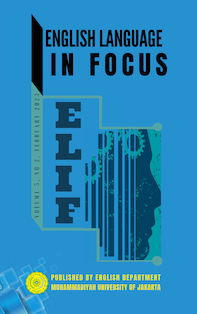The Effectiveness of Learning Videos Measuring Length With Size Comparison Of Mathematics At Elementary High School Indramayu West Java
DOI:
https://doi.org/10.24853/elif.5.2.187-194Keywords:
elfayanti_r123Abstract
ABSTRACT This study aims to test the effectiveness of using learning videos media, namely learning using videos about measuring length by comparing the length of an object, comparing length measurements for mathematics lesson class 1 SD N I Pekandangan Jaya Kab. Indramayu.In this research, the researcher used a per-experiment. To determine the effectiveness of using learning videos media, comparing length measurements for mathematics in class one elementary high school , in this research, theresearcher uses a per-experimental with a one-group pretest and post-testdesign. The instrument used in this study is the pretest and post-test. This pretest and post-test aim to determine the effectiveness of using learning videos media, comparing length measurement for mathematics by students. The data analysis was done by comparing the calculation of to with t table to determine the hypothesis.This study used the pre-experimental class method. By using the RnD method. So the learning outcomes using learning video media measuring length of these object can improve student learning outcomes from these result , learning videos comparing length sizes are very effective in student learning in the field of mathematics, especially grade 1 SD N Pekandangan Jaya . Kab. Indramayu.Keywoerds : Development , Mathematics , Learning Video , RnD.Published
2023-02-25
Issue
Section
Articles
License
Authors who publish with this journal agree to the following terms:
- Authors retain copyright and grant the journal right of first publication with the work simultaneously licensed under a Creative Commons Attribution License that allows others to share the work with an acknowledgment of the work's authorship and initial publication in this journal.
- Authors can enter into separate, additional contractual arrangements for the non-exclusive distribution of the journal's published version of the work (e.g., post it to an institutional repository or publish it in a book), with an acknowledgment of its initial publication in this journal.
- Authors are permitted and encouraged to post their work online (e.g., in institutional repositories or on their website) before and during the submission process, as it can lead to productive exchanges, as well as earlier and greater citation of published work (See The Effect of Open Access).


